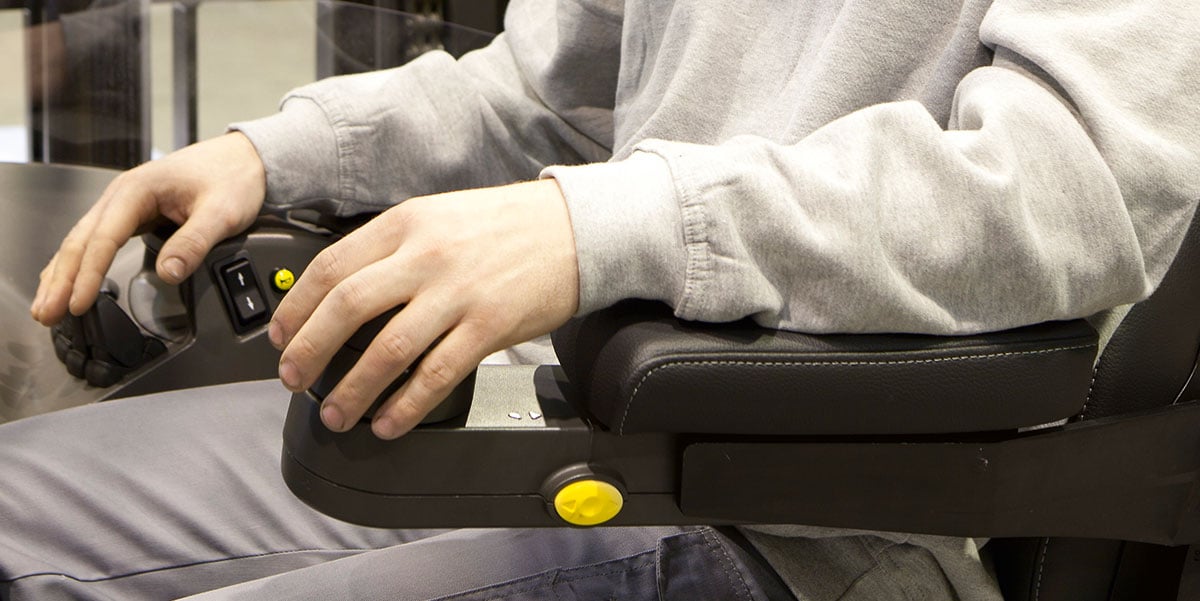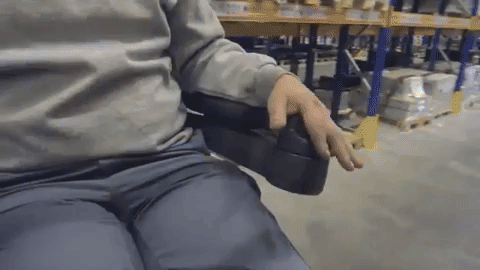
The forklift’s steering wheel is a component that is often taken for granted, but it’s usually the most-used. Navigating a busy warehouse requires a lot of manoeuvring, and the driver has to make constant adjustments in order to drive safely.
In fact, according to research we have conducted with Gothenburg's Chalmers University of Technology, a reach truck driver makes around 2,000 arm movements in an hour, which adds up to roughly 16,000 movements over an average shift.
The small movement required to operate a steering wheel doesn’t seem like much, but when repeated 16,000 times a day over a period of months and years, it’s not surprising that it often causes strain and injuries that can prevent drivers from working.
That’s why the mini steering wheel on our reach trucks was such an important development. Many reach trucks use a larger steering wheel, and place it in front of the driver on the body of the truck, requiring them to reach forward to use it. With our solution, the steering wheel is much smaller and integrated into a ‘floating’ armrest, which can move back and forward freely as the driver moves their arm.

Rather than having to elevate their arm and make larger movements to steer, the mini steering wheel allows the driver to have a completely neutral posture, and makes the movements needed to manoeuvre much smaller.
This means less strain on the driver’s body, which means fewer injuries and more efficient driving, both of which result in greater productivity and profitability. That’s not a bad outcome from a small ergonomic optimisation to the driver’s controls.
The steering wheel is one thing, but there’s many other common forklift features that can be optimised to make them more comfortable, more efficient and easier to use. Interested? Click below to download our guide The top six ergonomic and safety features you should consider for your forklift truck.






































Comment